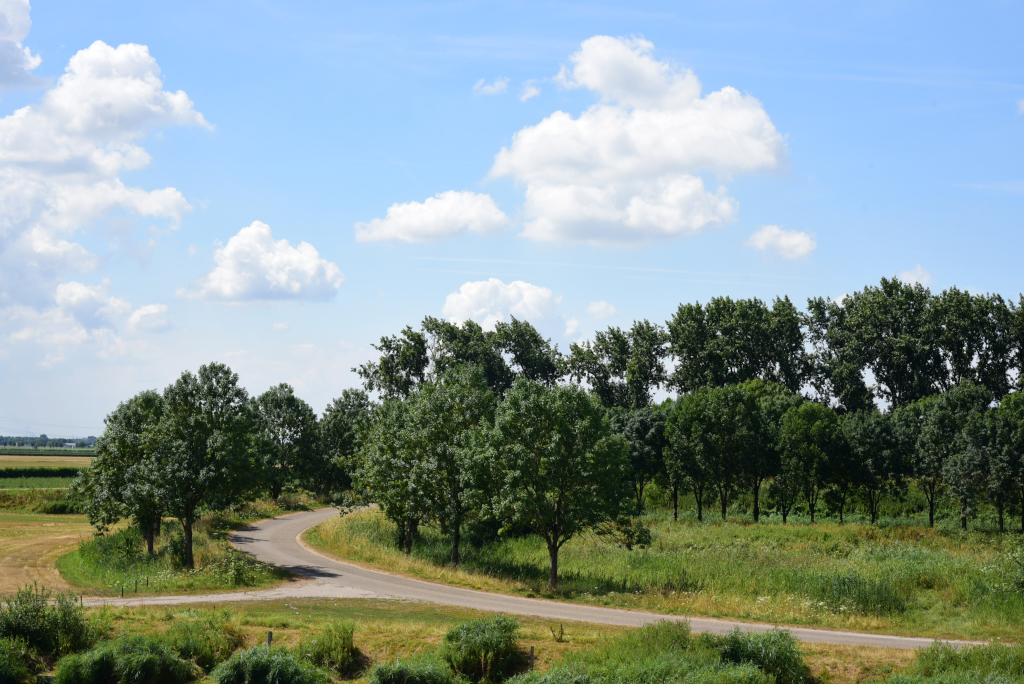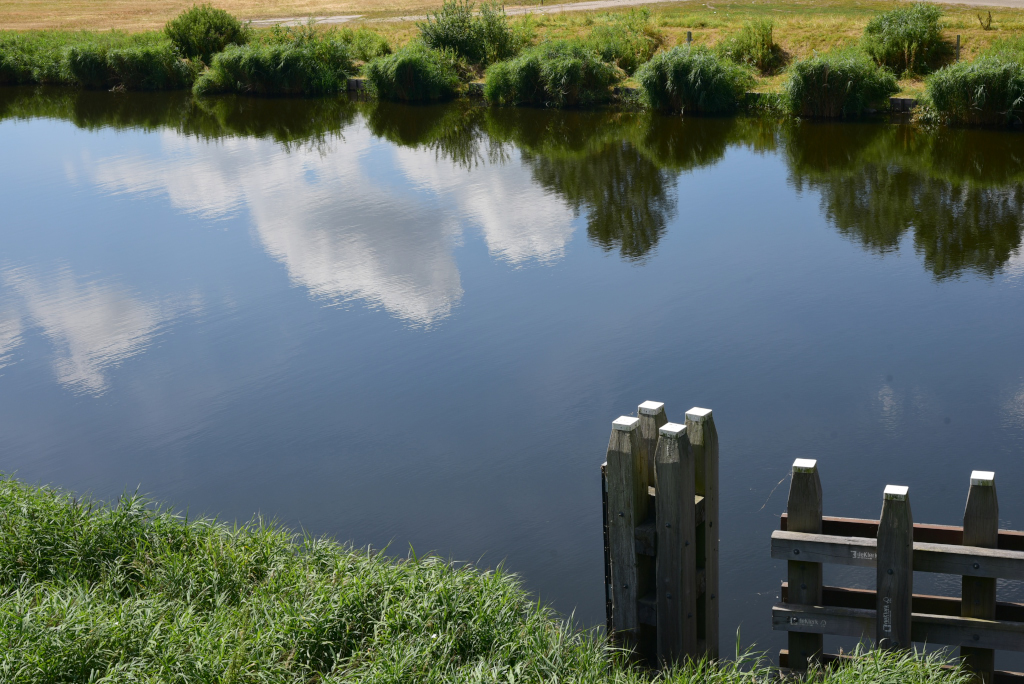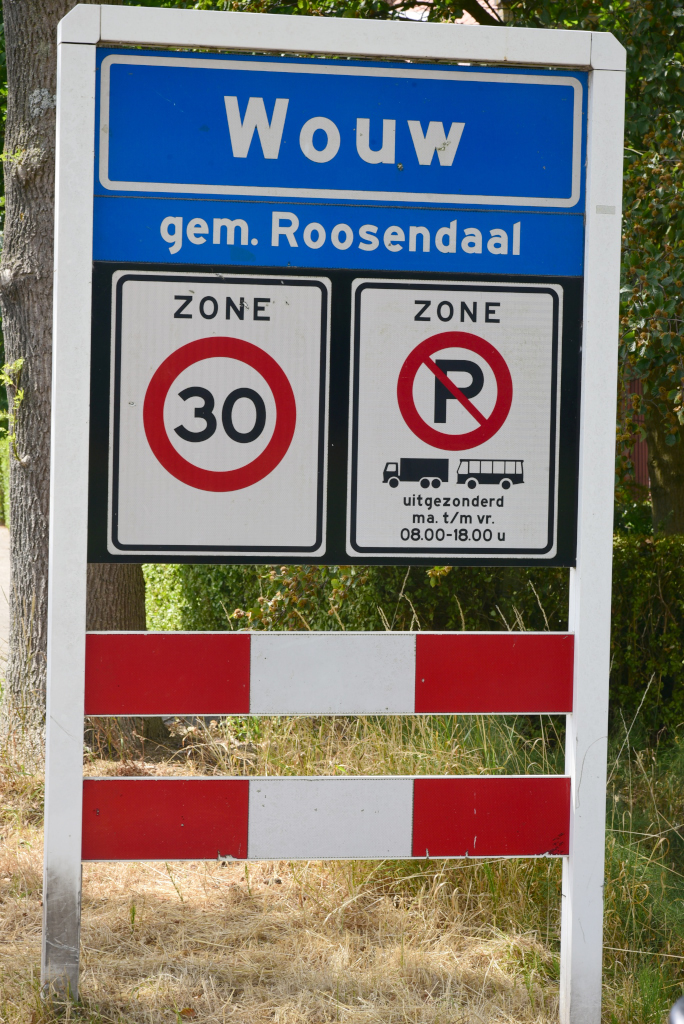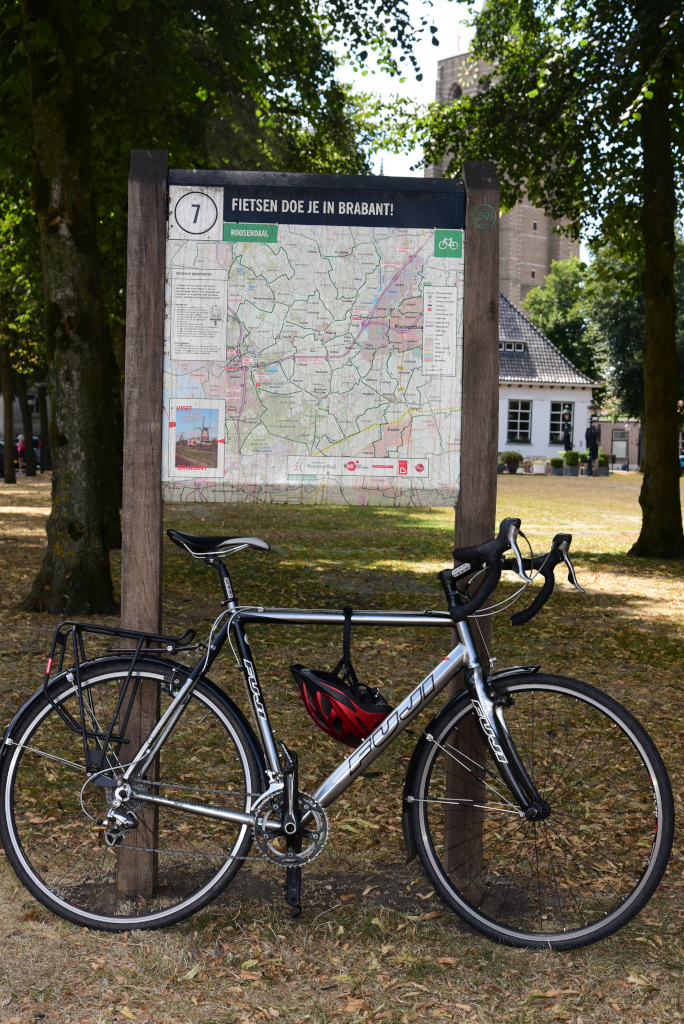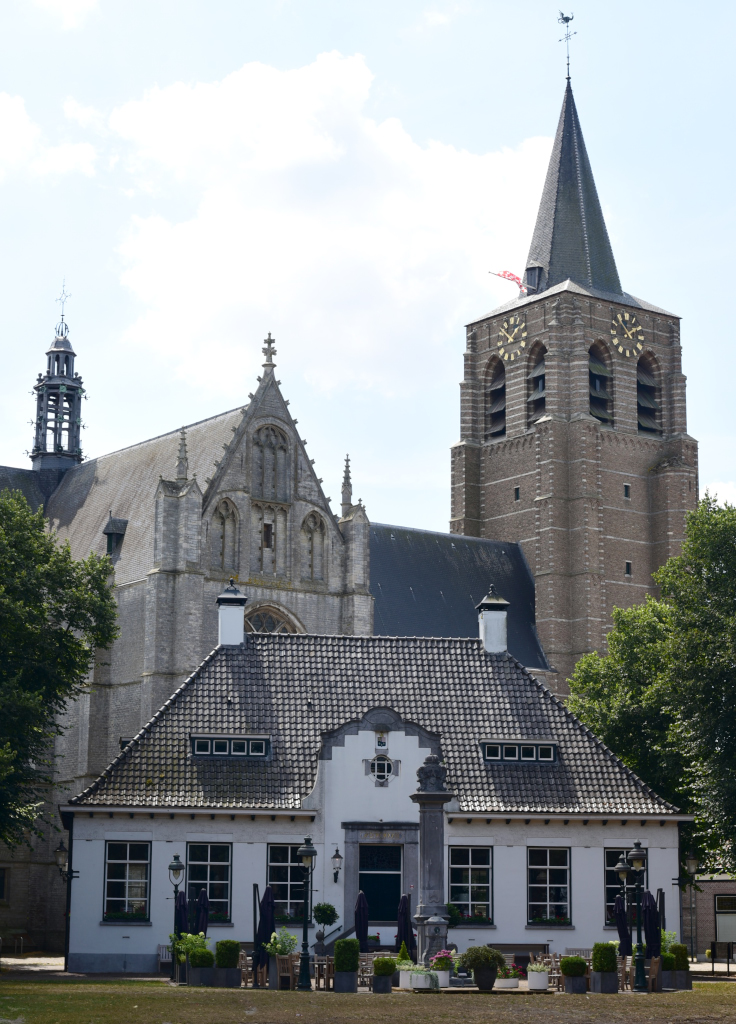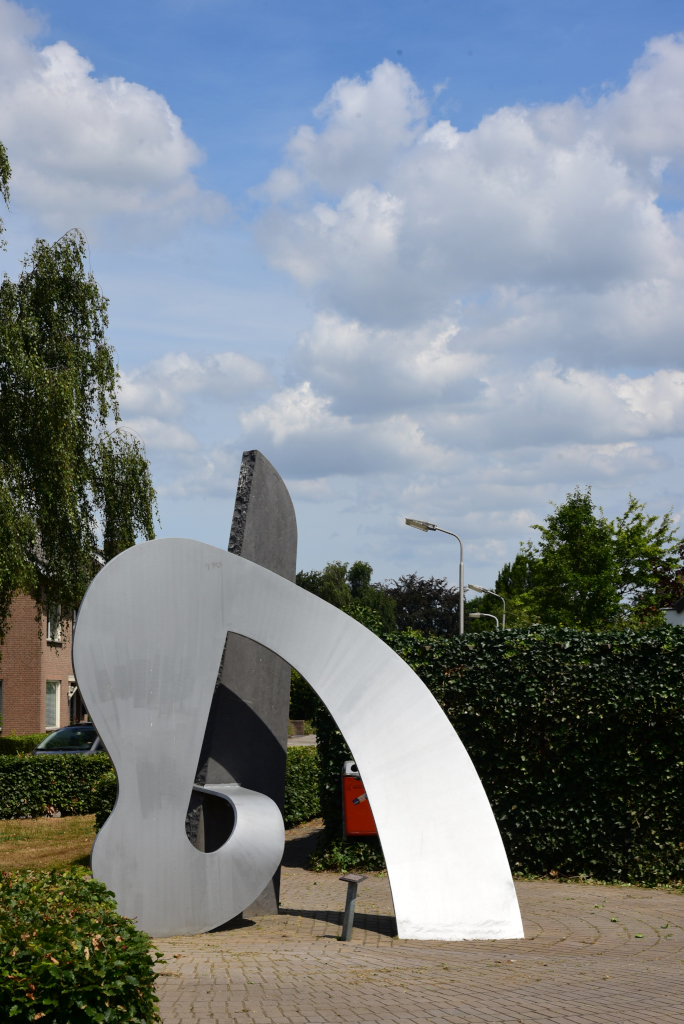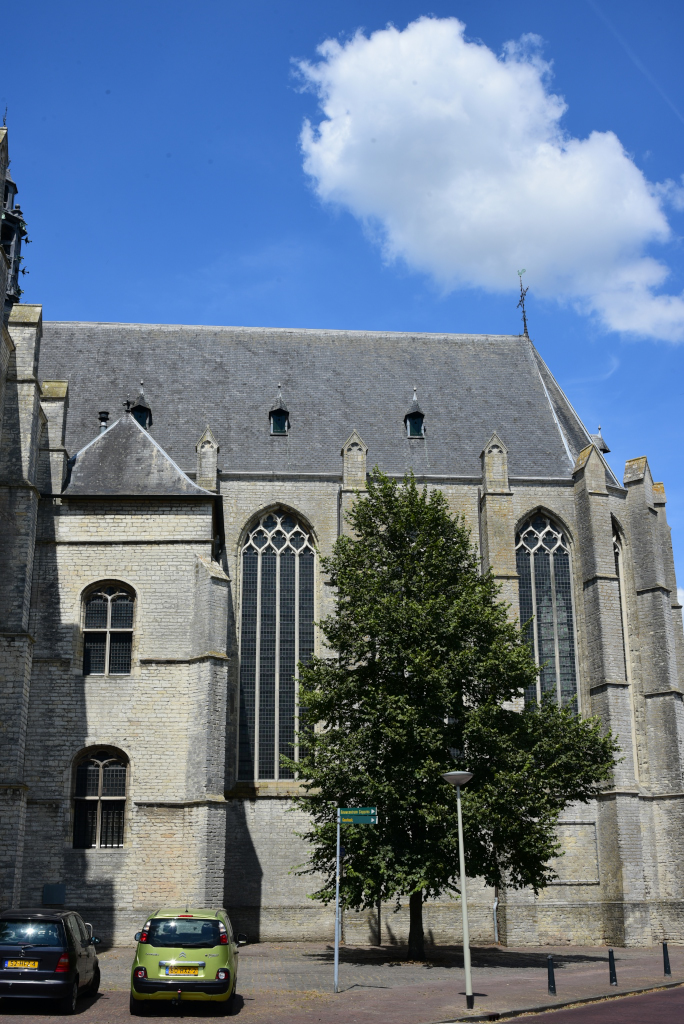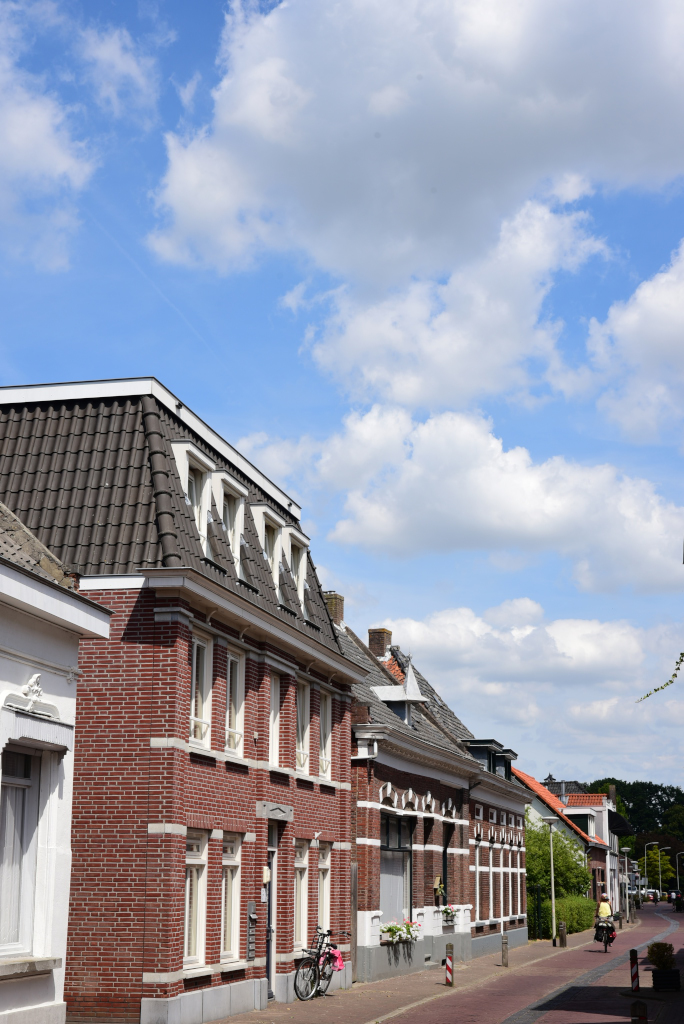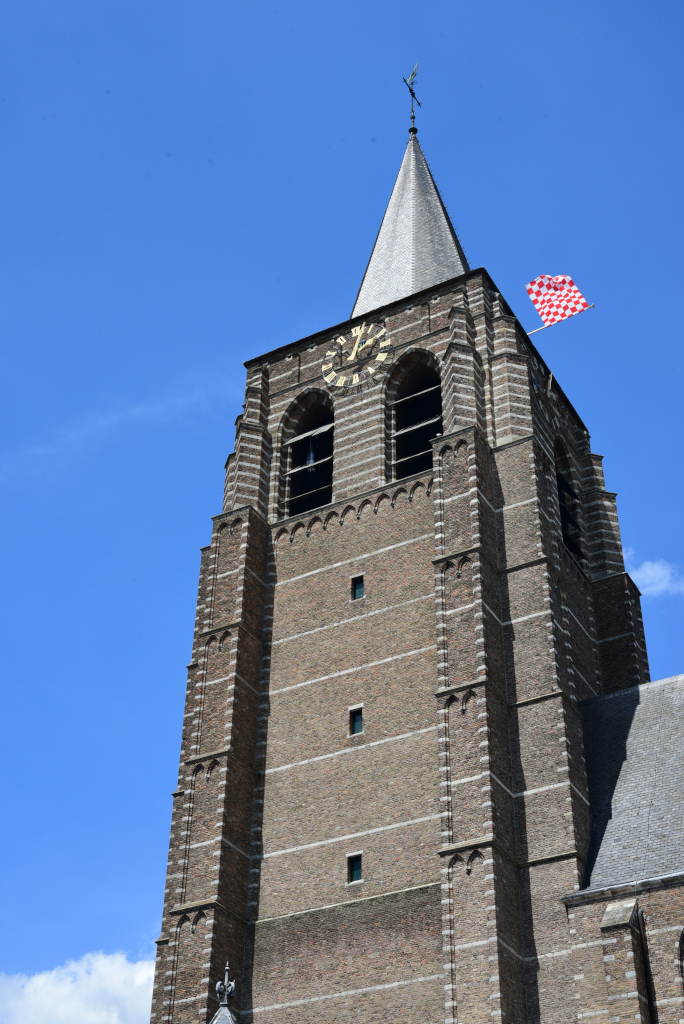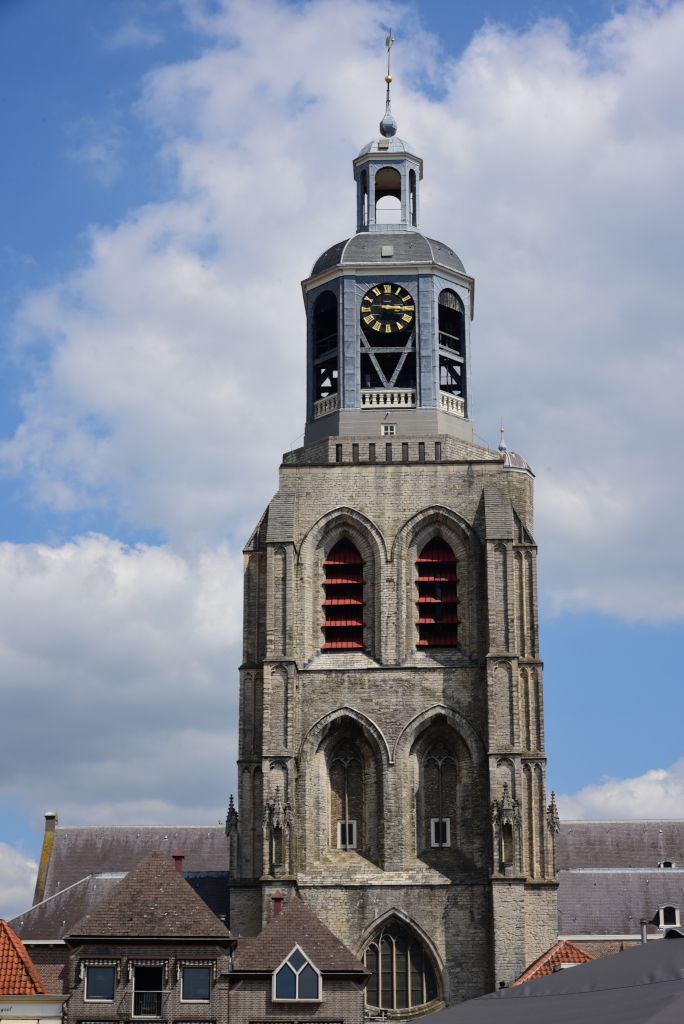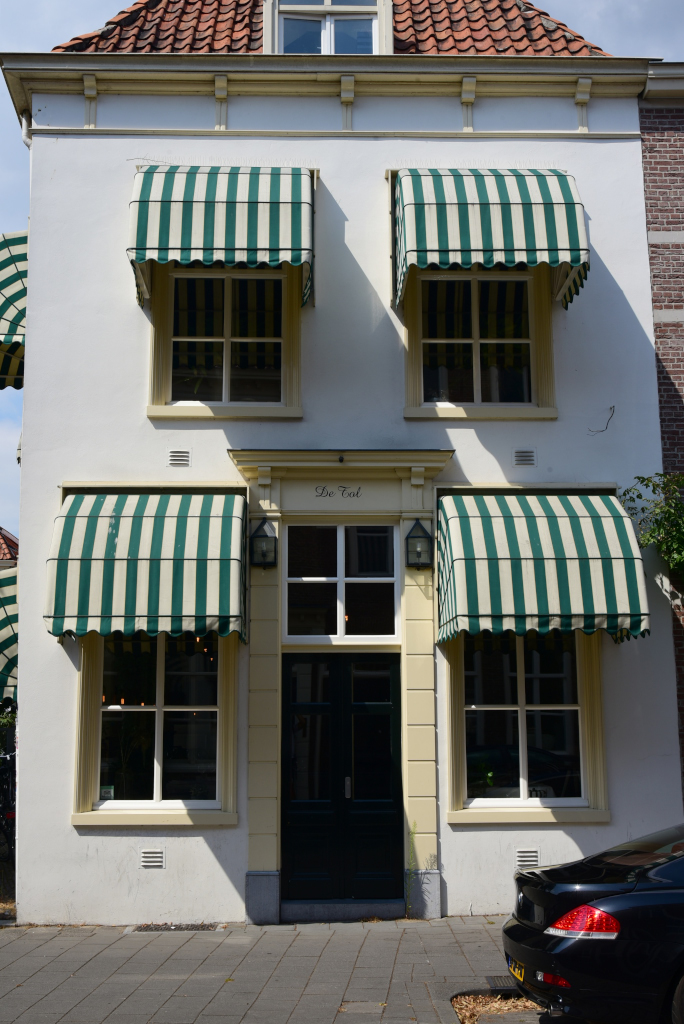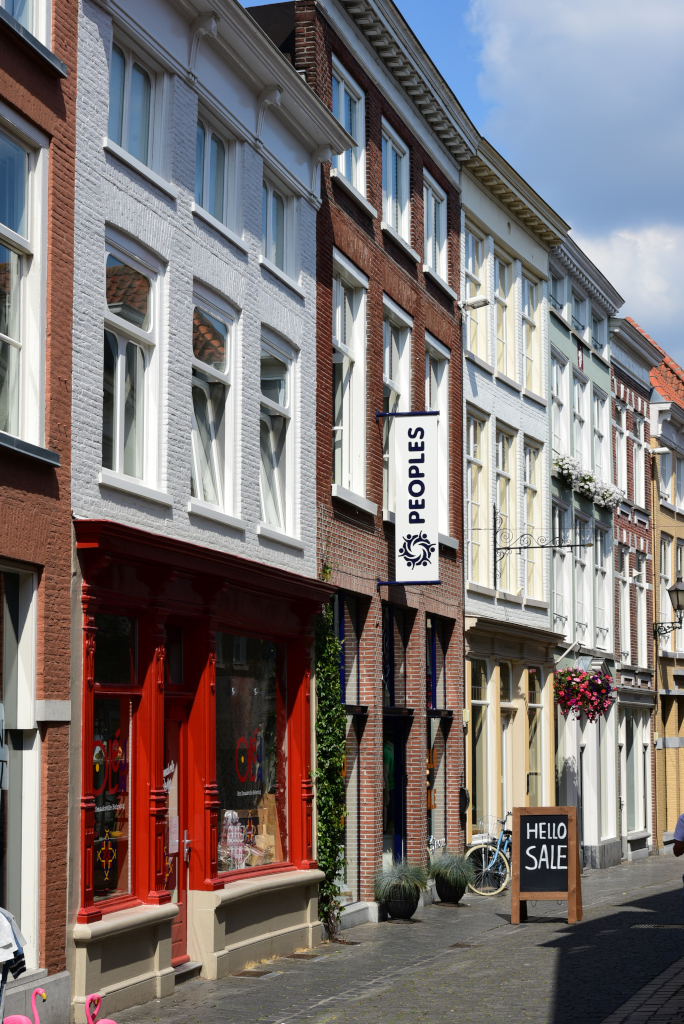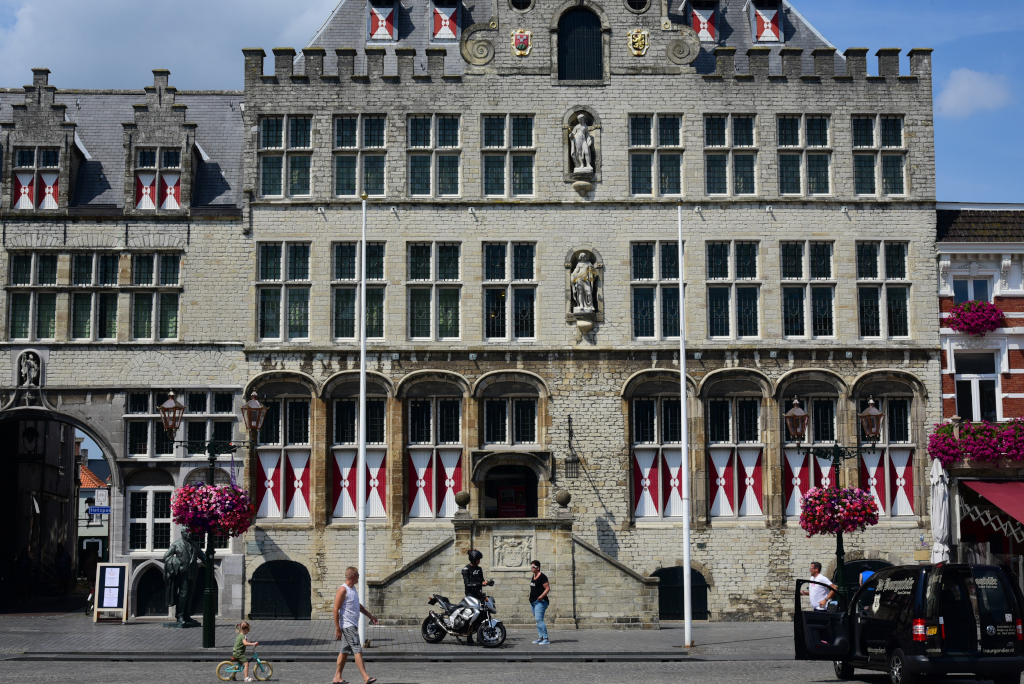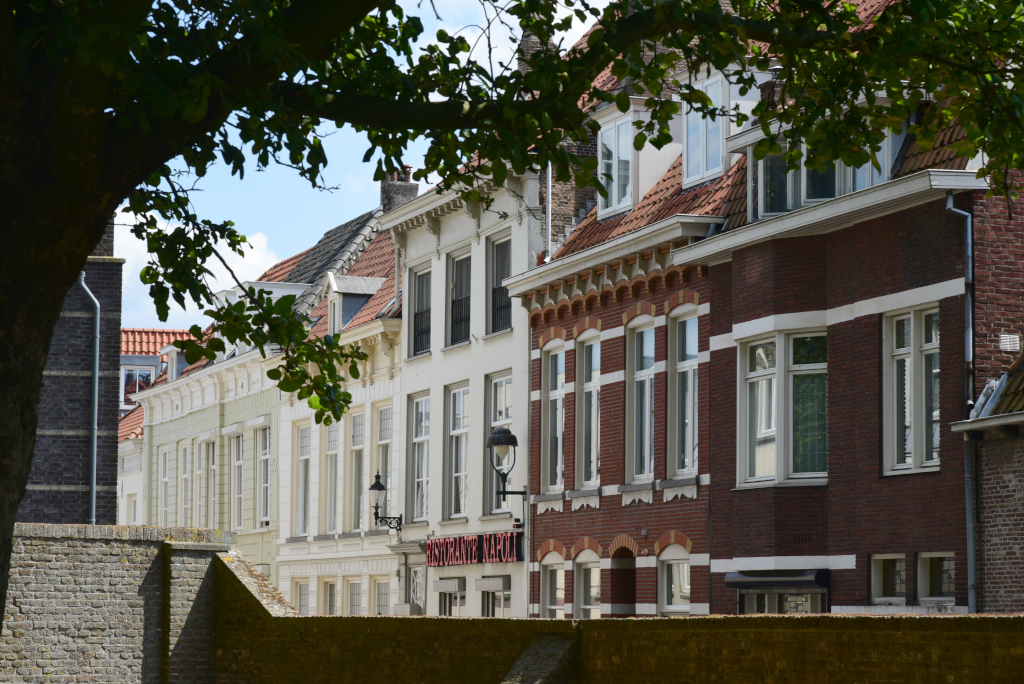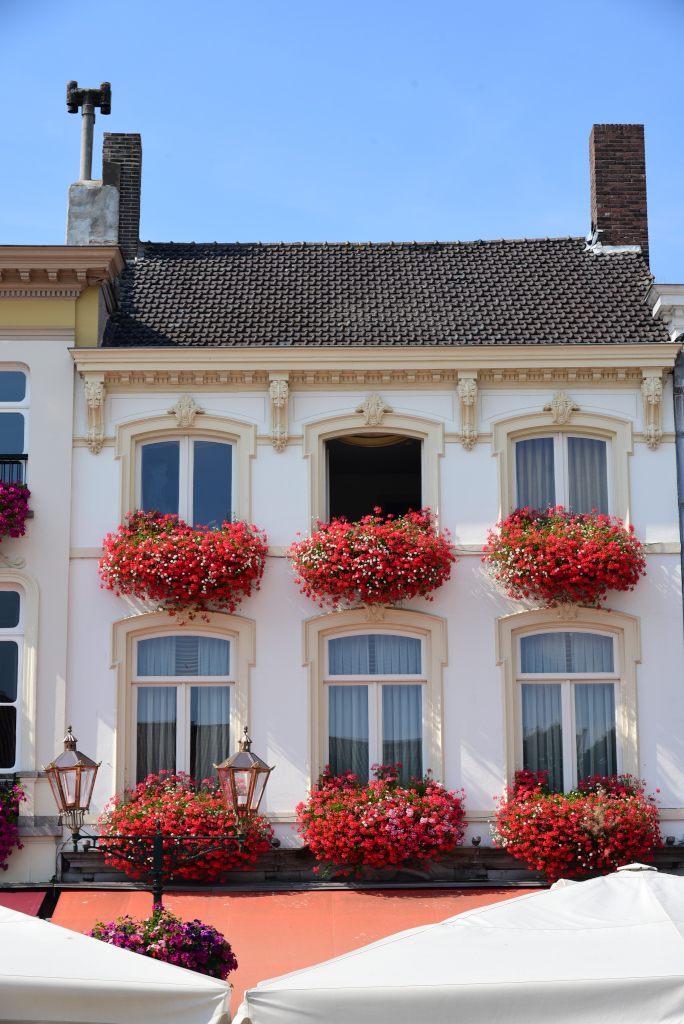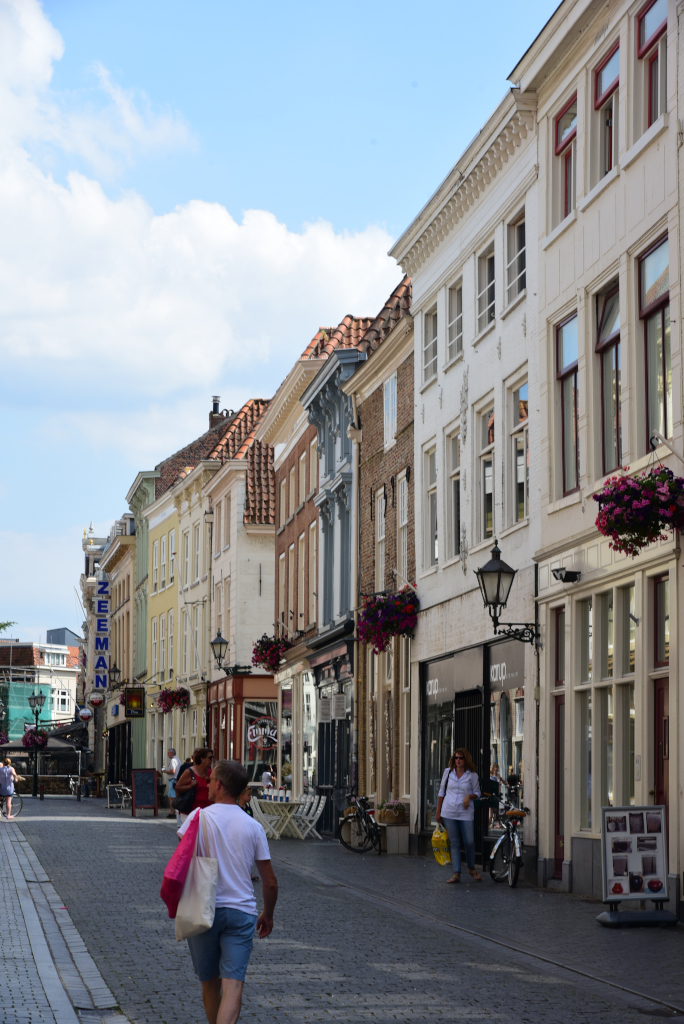July 18, 2018
The landscape en route to Bergen op Zoom is stunning, on one hand flat and unembellished by topographical details, and yet revealing its modest mysteries shimmering under the radiant summer sun, particularly when seen from the inclined position at the crest of the dikes that traverse the flat landscape. Some of the fields around me lie fallow, others cropped, with tendrils of cotton batting scattered across the blue sky, mirror images emanating from the sheer surfaces of canals, thickly wooded copses emerging on the flat horizon along the banks of the still waterways.
The town of Wouw appears suddenly along the bike trails and country roads that weave across this serene landscape, rich in shrubbery, meticulously maintained suburban houses, the odd Dutch Renaissance villa, clusters of fecund hydrangea, the typical low-slung red brick inflected with white door frames and window sashes leading to the Gothic church, towering immodestly over its architectural brethren scattered around it.
Bergen op Zoom is a veritable gem of the western Dutch Brabant, facing west over the estuaries that mark the province of Zeeland, although the periphery of Bergen op Zoom does little to introduce the visitor to the Baroque elegance and historical integrity of the old town.
Past the middling shopping streets attracting a mix of locals, immigrants and social outcasts lie narrow alleys weaving amidst the historic structures and ostentatious churches towards the central square, lined with its imposing Renaissance structures. Around me, heavy window frames, elaborate pediments, muted shades of ivory, sudden bursts of foliage, a park with a gazebo, treed squares, and windows lined with identical flower baskets.
The central square is lined with restaurants and cafes, each with its symmetrically arranged tables protected from the bright summer sun with broad patio umbrellas. Shops offer epicurean delights, antiquarian oddities, artisanal decorative items, housed in elegantly renovated buildings hearkening back to another era.
On the far end of town, past the Gothic towers that offer access to the old town lies a broad canal that eventually reaches the sea, spacious residential properties and a broad expanse of commercial buildings that comprise the backbone of the local economy. And laced through the broad swaths of parkland, the roads and bicycle trails that lead eastward towards Rosendaal and larger hubs.
A characteristic of the area around Bergen op Zoom is the juncture between sandy soil and marine clay, which has over the centuries created hills called the Brabantse Wal, or “ramparts of Brabant”.
The town was granted city status probably in 1212. In 1287, it became a lordship, then was elevated to a margraviate in the mid-16th century. Bergen op Zoom played an important role in the defenses of the United Provinces, as it was characterized by optimal natural defenses, including easily flooded polders and access to the sea. Hence the town was a strategic enclave during the war for Dutch independence beginning in the late sixteenth in which it was never successfully besieged.
In 1747, during the War of the Austrian Succession, the French army laid siege to Bergen op Zoom. Even though the town did feature basic fortifications, they were insufficient to hold back the French, who destroyed the town and slaughtered the Dutch garrison.
During the Eighty Years’ War, Bergen op Zoom chose the side of the Dutch Republic, and hence Protestantism. The Catholics of the city either adapted to the new religious status of the town or moved to the surrounding countryside, which remained largely Catholic. Protestants dominated the council until the 18th century, then subsequently, the number of Catholics in Bergen op Zoom increased and by the second part of the 18th century, the majority of Bergen op Zoom was again Catholic.
(Narrative excerpted from Wikipedia)






